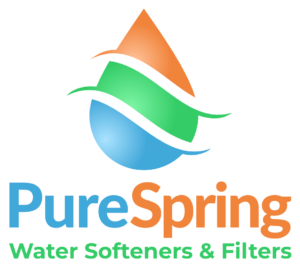Common Water Problems
What's in Your Water?
Hard Water
It is responsible for causing dry and brittle nails, skin, and hair all the while resulting in spotted dishware, soap scum buildup, and poor appliance performance. Most homes will have a hard water supply, regardless of whether their water is from a municipal supplier or a private well. Very few homeowners are aware of the fact their water supply contains hard water, and still fewer are actually aware of the damage that hard water causes. A water supply with hard water will contain some or all of the following minerals: calcium, iron, and magnesium.
Water Staining
Water is a natural solvent and can dissolve virtually anything it comes into contact with depending on conditions. For example, if your water supply is rusty or orange, it means it contains a high dose of manganese or iron. Likewise, blue-green water stains usually point to a water supply with low pH levels. Basically, these stains will occur anywhere the water makes contact with regularly such as the bathtub, sink, or fixtures.
Cloudy Water
Usually referred to as turbidity, cloudy or murky gray water is a result of suspended solids. This usually means construction waste runoff or the after effects of a storm.
Chlorine Water
Chlorine is able to kill harmful bacteria and viruses found in water, but it’s only necessary to use it at a water treatment plant. Once the water enters your household, there’s no reason to suffer from the ill effects of chlorinated water. Chlorine not only causes lung problems and exacerbates allergies, but it can dry out skin and shorten the lifespan of rubber components found in most household appliances.
Sulfur Water
Hydrogen sulfide is found in large doses in water supply, and not only is it corrosive by nature, but has a distinct smell of rotten eggs. Most people notice the smell from hot water tanks because it’s commonly found in groundwater. If your home has it in its water supply, you will notice that it makes prepared foods taste foul while leaving behind a lingering odor on your body, hair, and clothes.
Facts About Drinking Water
As humans, our bodies are 70% water and it is the life force necessary to keep our systems functioning well. From your brain to your muscles and your kidneys to your bones, water ensures that everything works and regulates their processes. Take into consideration the state of tap water. Local treatment plants work to disinfect your water supply before it enters your household, but these chemicals, toxins, and other elements are often left behind in trace amounts. Though bottled water can certainly combat some of these problems, it has detrimental effects on our environment.
We produce 1.5 million tons of plastic waste EVERY year. Furthermore, in order to actually produce the plastic, 47 million gallons of oil is required. A 2018 consumer study report revealed that Americans on average spend $31 billion yearly in bottled water. How much did your household contribute to these numbers? In fact, water coming in bottles costs three times as much as gasoline!


Hidden Costs Of Water
The mineral deposits found in water supplies across America causes harm to appliances and wear out their components much faster. This adds up in maintenance and replacement costs.
Limescale buildup, for example, diminishes the efficiency of a hot water heater because it clogs the unit and causes it to waste more energy. Similarly, normal tap water is also harsh on your laundry causing the textiles to fade and exhibit signs of wear prematurely.
Most water supplies contain harsh chemicals in order to make them safe and to disinfect them before entering the home. This is not something your family should be subjected to!
Chlorine can cause your kitchenware to take on a dull and lifeless look while leaving behind scum, residue, and spots on your fixtures and appliances. You will need to use more beauty products and an excessive amount of cleaning solutions to ensure that every aspect of your household is running according to plans.
Municipal Water Treatment
This water is drawn from a locally sourced natural water supply and is pumped through gravel beds to trap solid waste. Chlorine is used to kill the contaminants within the water along with other chemicals. Though this doesn’t sound safe, and it really isn’t, the water meets guidelines and is pumped into your home.
A water treatment system is the only solution to this problem. Water purification enables you to have complete authority and control over your water supply while also removing harmful contaminants. From improving appliance efficiency to helping eliminate appliance maintenance, the right system is a worthy investment!

